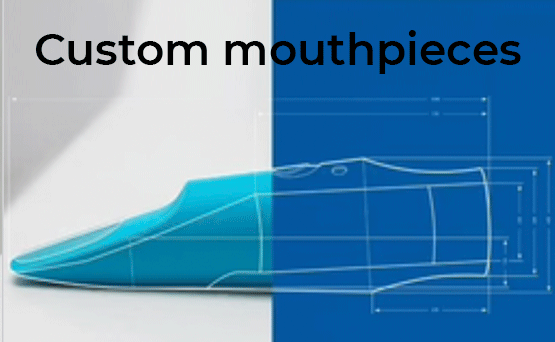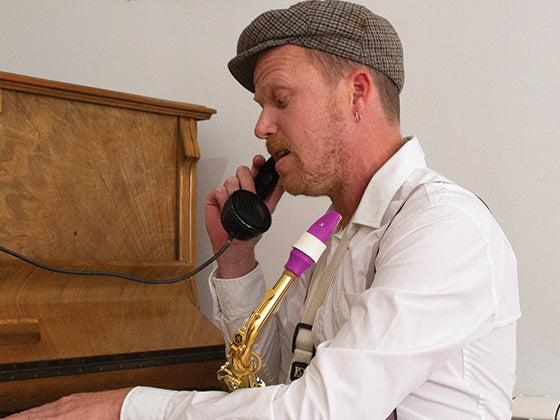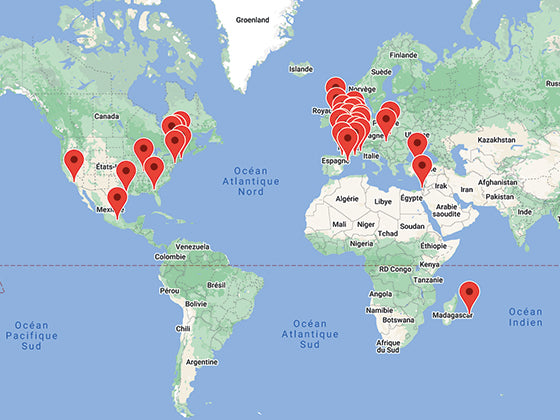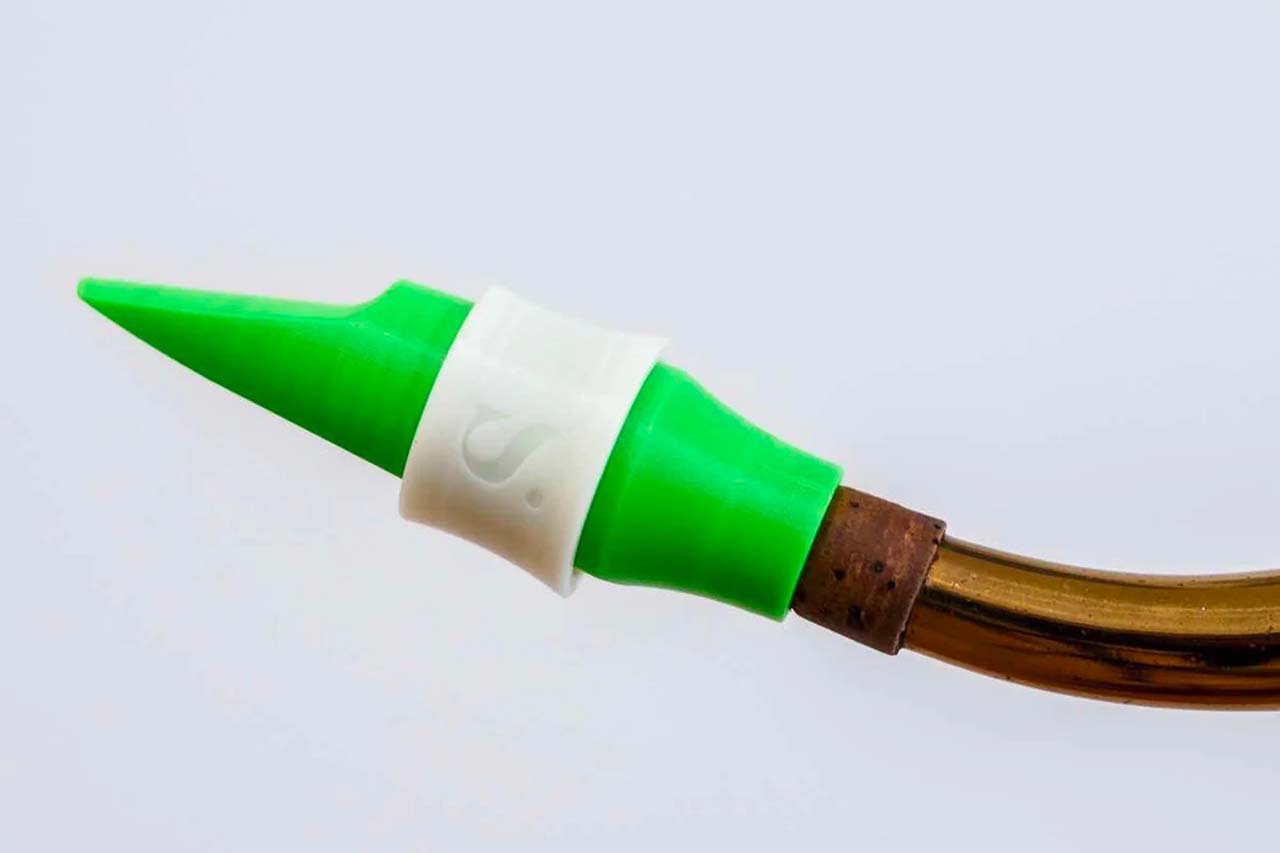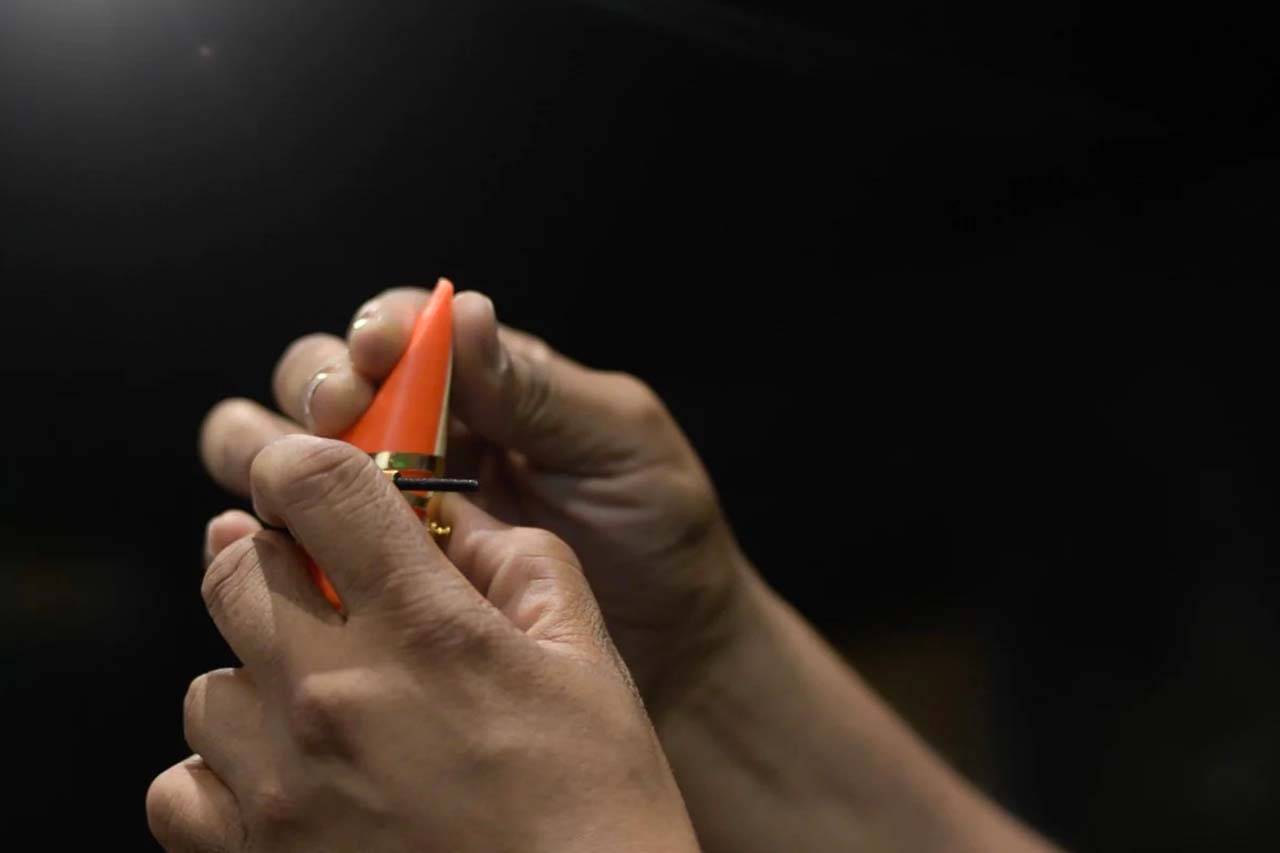You have surely all noticed that it is more complicated to play the lowest notes on the saxophone softly compared to those in the higher register. But do you know why?
Input impedance is our friend
NB : If you don't know what the input impedance is, I'd recommend you first read my article on acoustic input impedance.
To answer this question, let’s start off by looking at the input impedance of a tenor saxophone in C fingering (actual note Bb2, 117Hz) for which all holes, except the two last ones, are closed:

As you can see, the first peak, at about 120Hz, which is related to the fundamental of this fingering, has a lower amplitude than peaks 2 and 3 (248Hz and 382Hz). Peaks 2 and 3 correspond to the second and the third harmonics (NB: this measurement was taken at the neck of the instrument, without an adapter for the mouthpiece. Therefore the instrument measurement does not take the full instrument into account, which explains why the measured frequencies are slightly higher than those produced when playing). The amplitude difference is about 1,7dB between peaks 1 and 2, and about 2.3dB between peaks 1 and 3. As the first peak is lower than the following two, the musician needs to blow harder in the instrument to play the corresponding note. This explains why it is harder to play the notes of the low register softly, in comparison with the higher register,i.e. the second peak.
Why is the first peak lower?
We can now try to figure out why the first peak is lower than peaks 2 and 3. To find the reason for this, let’s have a look at the input impedance of an oboe for its lowest note, the Bb3 (234Hz), for which all holes are closed:

As with the saxophone, the first peak (234 Hz) is lower in amplitude than the two following peaks (465 Hz and 708 Hz), with differences of 3.7 dB between peaks 1 and 2 and between peaks 1 and 3.
Finally, let’s have a look at the input impedance of the lowest note of a Bb clarinet, the E3:

The behavior of the peaks is different this time. Here, the first peak is higher than the following peaks (about 7 to 8dB higher than peaks 2 and 3).
What is the fundamental difference between these three instruments? The saxophone and the oboe have a conical bore, while the clarinet has a cylindrical bore. Therefore, it seems that the difficulties in playing the fundamentals of the lowest notes of the saxophone softly are due to its shape.
Cone VS Cylinder
What is the acoustical difference between a cone and a cylinder? Look at the curve below. It represents the input impedance of a cylinder and of several cones of the same length but with different opening angles.

We can see that when the opening angle of the cone is higher, the amplitude of the first impedance peak decreases in comparison with the following peaks.
In conclusion, if you dream of plaing low notes very softly, choose a cylindrical instrument or practice your own sound with long tones, overtones and 5ths and 8ves !
Références
Plitnik & Strong 1979 : Numerical method for calculating input impedances of the oboe, J. Acoustc. Soc. Am. 65, 1979
Le site de l'équipe d'acoustique musicale de l'Université de New South Wales

